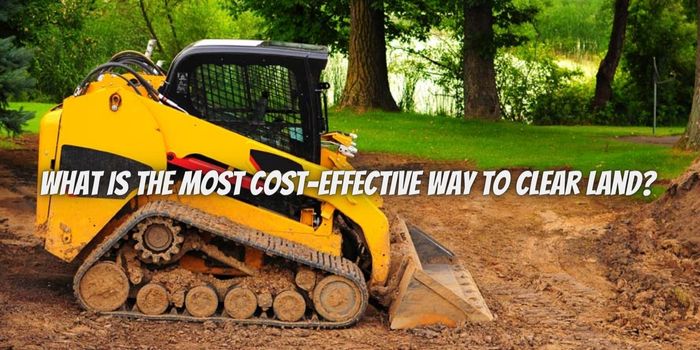Clearing land is a critical step in various projects, from construction and agriculture to creating recreational spaces. Nevertheless, the cost of land clearing can vary significantly relying on factors such as the size of the land, the type of vegetation present, and the chosen method. We will explore some of the most cost-effective ways to clear land, concentrating on techniques that balance efficiency and affordability.
Understanding Land Clearing
Before delving into specific methods, it’s paramount to comprehend the complexity of land clearing. Land clearing implicates the removal of vegetation, trees, debris, and sometimes rocks or structures to prepare the land for a specific purpose. The goal is to assemble a clean, level, and safe surface that meets the project’s requirements.
Manual Land Clearing
Manual land clearing is one of the most cost-effective methods, particularly for small-scale projects or when preserving specific trees or vegetation is paramount. This method involves the use of hand tools such as chainsaws, axes, and machetes, along with manpower. While it is labor-intensive and time-consuming, it can be the most economical option when equipment costs are a concern.
Manual clearing is best suited for small plots of land, urban areas, or situations where precision is crucial. It qualifies for the selective removal of specific vegetation while minimizing damage to the surrounding environment. Nevertheless, it is not practical for large-scale clearing due to the substantial labor and time required.
Mechanical Land Clearing
Mechanical land clearing methods involve the use of heavy equipment to expedite the clearing process. Bulldozers, excavators, and skid-steer loaders equipped with attachments like mulchers or brush cutters are commonly used for this purpose. Mechanical clearing is highly efficient and suitable for large tracts of land.
One of the most cost-effective mechanical clearing techniques is the use of mulchers or forestry mowers. These machines can quickly lessen trees, brush, and vegetation into mulch, which can be left on-site as organic matter or removed as desired. While the initial equipment rental costs can be high, mechanical clearing can save time and labor expenses in the long run, making it cost-effective for large-scale projects.
Prescribed Burning
Prescribed burning is a land clearing method that involves deliberately setting controlled fires to clear vegetation. It is a cost-effective technique commonly used in forestry and agriculture. Controlled burns can dismiss overgrown grasses, brush, and some small trees, lessening the risk of wildfire and promoting healthy plant growth.
This method is highly efficient in terms of cost, as it requires minimal equipment and labor. Nevertheless, it is essential to conduct controlled burns with the utmost care, adhering to safety regulations and environmental considerations. Prescribed burning may not be suitable for all locations, especially in urban or densely populated areas, due to safety concerns and potential air quality issues.
Chemical Land Clearing
Chemical land clearing, also comprehended as herbicide application, is a method that involves using chemicals to kill and remove vegetation. This technique is often employed for site preparation in agriculture and forestry, where regrowth is undesirable. It can be a cost-effective approach for large land areas with dense vegetation.
Herbicides are applied selectively or uniformly to the target vegetation. They work by inhibiting plant growth, causing the plants to die off gradually. Chemical clearing can be cost-effective because it requires minimal labor compared to manual or mechanical methods. Nevertheless, it may raise environmental and safety concerns, and it is crucial to use approved chemicals and follow application guidelines.
Environmental Considerations
Nevertheless of the land clearing method selected, it is paramount to evaluate environmental impacts and regulatory requirements. Many regions have laws and regulations in place to protect ecosystems, water quality, and endangered species. Failing to adhere to these regulations can result in costly fines and legal complications. Before initiating any land clearing project, conduct a thorough environmental assessment and obtain the necessary permits. Additionally, regard environmentally friendly techniques such as preserving native vegetation, erosion control, and habitat restoration to mitigate the consequence of land clearing on the ecosystem.
The most cost-effective way to clear land pivots on various factors, including the scale of the project, the type of vegetation, budget constraints, and environmental considerations. Manual clearing is suitable for small-scale projects with limited budgets, while mechanical methods like mulching and hydro-axing are cost-effective for larger areas. Prescribed burning can be an economical choice in specific situations, and chemical clearing is an option for targeting unwanted vegetation. When planning a land clearing project, it is crucial to weigh the benefits and drawbacks of each method and consider the environmental implications. By selecting the most appropriate and cost-effective approach, you can ensure that your land clearing project meets your objectives efficiently and responsibly. Land clearing services can help you transform overgrown or undeveloped land into a clean and usable space for your specific needs.




